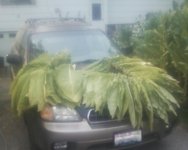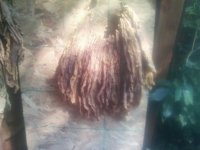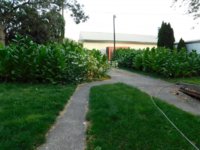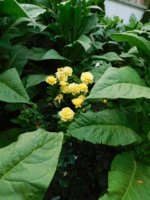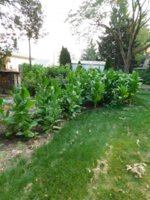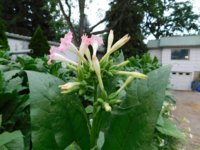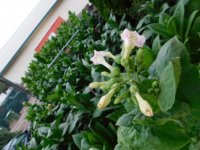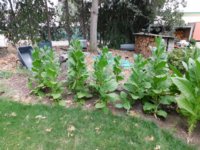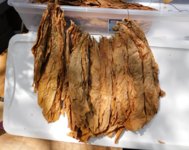OldDinosaurWesH
Well-Known Member
Bob:
I kind of thought that time was the answer. You have just confirmed that. I once over-fertilized tomatoes and got lots of luxurious greenery, but they didn't bloom until September. A little late for any fruit. I am attaching another one of my fuzzy photos showing two Izmir's, one behind the other that illustrate the tall skinny one with smaller leaves (behind) vs. the short stubby one (front) with the long large leaves. I have put my four-foot measuring stick in the frame to give scale. The taller plant has 8 - 10" leaves & is about 6' tall. The shorter plant has 16 - 17" leaves & is barely over 4' tall. Go figure! This photo is being obscured somewhat by Burley 9 on the left and Ostrolist 6 on the right. I have cropped those two out of the photo as much as I can. Both Burley and Ostrolist are in the 6 to 7' range & make some really large horse-blanket leaves that take up a lot of space. Maybe when Ismir is ready for it, they will make my kiln smell nice.
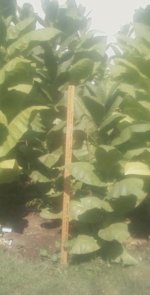
Thanks for your info!
Wes H.
I kind of thought that time was the answer. You have just confirmed that. I once over-fertilized tomatoes and got lots of luxurious greenery, but they didn't bloom until September. A little late for any fruit. I am attaching another one of my fuzzy photos showing two Izmir's, one behind the other that illustrate the tall skinny one with smaller leaves (behind) vs. the short stubby one (front) with the long large leaves. I have put my four-foot measuring stick in the frame to give scale. The taller plant has 8 - 10" leaves & is about 6' tall. The shorter plant has 16 - 17" leaves & is barely over 4' tall. Go figure! This photo is being obscured somewhat by Burley 9 on the left and Ostrolist 6 on the right. I have cropped those two out of the photo as much as I can. Both Burley and Ostrolist are in the 6 to 7' range & make some really large horse-blanket leaves that take up a lot of space. Maybe when Ismir is ready for it, they will make my kiln smell nice.

Thanks for your info!
Wes H.



